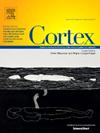Cognitive reserve types and depressive symptoms development in late-life: A population-based cohort study
IF 3.2
2区 心理学
Q1 BEHAVIORAL SCIENCES
引用次数: 0
Abstract
Introduction
Cognitive reserve (CR) describes individual differences in susceptibility to brain damage that translates into varying dementia onsets and may also influence the occurrence of depressive symptoms. Within a population-based cohort of older people, we investigated two operationalizations of CR, residual- and activity-based approaches, in their association with the development of depressive symptoms.
Methods
We analyzed longitudinal data on 402 dementia- and depression-free adults aged 60+ from the Swedish National Study on Aging and Care in Kungsholmen (SNAC-K) who underwent brain MRI at baseline. Residual-based reserve was derived by regressing episodic memory on a brain-integrity index incorporating six structural MRI markers. Activity-based reserve factored lifelong CR-enhancing experiences, including education, work complexity, social network, and leisure activities. Clinically relevant depressive symptoms were defined as a Montgomery–Åsberg Depression Rating Scale score >6. Cox hazard models were used to explore the association between both residual- and activity-based CR measures (categorized in tertiles) and incidence of depressive symptoms over a 15-year follow-up, while accounting for sociodemographic, clinical, behavioral factors, and brain integrity. Analyses for the activity-based measure were replicated in the full SNAC-K sample (N = 2709), further exploring depression diagnosis as additional outcome.
Results
Compared to low levels, higher levels of residual-based CR were associated with a lower hazard of depressive symptom onset in fully adjusted models (HR: .43, 95%CI .22, .84). While activity-based CR was not significantly associated with developing depressive symptoms in the MRI subsample (HRhigh .47, 95%CI .21, 1.04), it was in the full sample (HRhigh .52, 95%CI .39, .71). Activity-based CR was further associated with depression diagnoses in the full sample (HRhigh: .45, 95%CI .31, .65).
Discussion
Largely independent of its measurement, CR appears to influence depressive symptomatology in late life. Reserve-enhancing initiatives may be beneficial not only for cognitive but also for mental health in older people.
认知储备类型与晚年抑郁症状发展:一项基于人群的队列研究
认知储备(CR)描述了个体对脑损伤易感性的差异,这种易感性转化为不同的痴呆发作,也可能影响抑郁症状的发生。在以人群为基础的老年人队列中,我们调查了CR的两种操作方法,残差和基于活动的方法,它们与抑郁症状发展的关系。方法:我们分析了402名60岁以上无痴呆和抑郁的成年人的纵向数据,这些成年人来自瑞典国家Kungsholmen老龄化和护理研究(SNAC-K),他们在基线时接受了脑MRI检查。残差储备是通过脑完整性指数回归情景记忆得出的,该指数包含六种结构MRI标记。基于活动的储备考虑了终身cr增强经验,包括教育、工作复杂性、社会网络和休闲活动。临床相关抑郁症状定义为Montgomery -Åsberg抑郁评定量表评分>;6。Cox风险模型用于探索残差和基于活动的CR测量(以位数分类)与15年随访期间抑郁症状发生率之间的关系,同时考虑到社会人口统计学、临床、行为因素和脑完整性。在完整的SNAC-K样本(N = 2709)中重复了基于活动的测量分析,进一步探索抑郁症诊断作为附加结果。结果与低水平相比,在完全调整模型中,高水平的残差CR与抑郁症状发作的风险较低相关(HR: 0.43, 95%CI: 0.22, 0.84)。虽然在MRI亚样本中,基于活动的CR与出现抑郁症状没有显著相关(HRhigh = 0.47, 95%CI = 0.21, 1.04),但在整个样本中却存在(HRhigh = 0.52, 95%CI = 0.39, 0.71)。在整个样本中,基于活动的CR与抑郁症诊断进一步相关(HRhigh: 0.45, 95%CI: 0.31, 0.65)。CR在很大程度上独立于其测量,似乎影响晚年的抑郁症状。增强储备的举措可能不仅有利于老年人的认知健康,也有利于老年人的心理健康。
本文章由计算机程序翻译,如有差异,请以英文原文为准。
求助全文
约1分钟内获得全文
求助全文
来源期刊

Cortex
医学-行为科学
CiteScore
7.00
自引率
5.60%
发文量
250
审稿时长
74 days
期刊介绍:
CORTEX is an international journal devoted to the study of cognition and of the relationship between the nervous system and mental processes, particularly as these are reflected in the behaviour of patients with acquired brain lesions, normal volunteers, children with typical and atypical development, and in the activation of brain regions and systems as recorded by functional neuroimaging techniques. It was founded in 1964 by Ennio De Renzi.
 求助内容:
求助内容: 应助结果提醒方式:
应助结果提醒方式:


